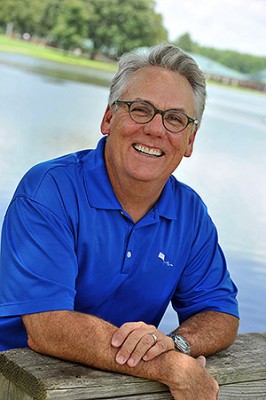Time In with Dr. Tim: Helping girls overcome the emotional scars of trauma
By Dr. Tim Goldsmith
Chief Clincial Officer
Youth Villages
The breakthrough came through crochet.
Like many girls who have suffered abuse or neglect, Kacy didn’t want to talk to a counselor. At just 10 years old, she had come to our Youth Villages Girls Center for Intensive Residential Treatment for intensive help in a safe setting. She hadn’t been successful in other places, but she wasn’t doing too well with us either.
Youth Villages helps girls in all our programs, but our Girls Center was opened in 2009 specifically because of the lack of effective help for girls with the most severe emotional and behavioral issues.
Like many of the girls who come to us, Kacy hurts herself — cutting her skin with any sharp object, even attempting suicide. That’s a common way that girls respond to trauma.

Children usually don’t respond to trauma the way we think they should. Trauma, just like any stress, can trigger “flight or fight” responses. But, girls and young children most often freeze rather than fight or flee. They don’t act out; they act in, disassociating from the world around them. They can look calm and be compliant. It may be some time before their self-harm, destructive behaviors or just withdrawal draw attention.
In the last 10 years or so, we’ve learned a lot about how the brain works in children and youth who bear the mental scars of trauma. When your brain is constantly in the flight, fight or freeze mode, it’s impossible to think clearly. The cognitive part of the brain has shut down. In order to reach Kacy with trauma-informed interventions, our therapist had to get her brain to open up during a human interaction – something the young girl had learned to fear.
You can’t force treatment on a child who has shut down. Counselors must take a step back and find creative and unique ways to engage. As it turned out, the young girl loved to crochet. The needles can be dangerous, and Kacy’s crochet time was very limited at the center.
The counselor told Kacy she could crochet all she wanted during their trauma-focused cognitive behavioral therapy sessions. That made the difference. As her fingers clicked away, Kacy was able to talk to her therapist and listen. In each session, she learns a new “skill”: relaxation, breathing, mindfulness. These are techniques that will help her be able to “self-regulate” — control herself when she is stressed by life situations like going home or back into a regular classroom.
Helping girls is different from helping boys. To get the best outcomes, to help girls live successfully in their homes and communities, counselors use everything we know about the brain and the most effective trauma-informed practices. It doesn’t hurt to know a little crochet, too.
